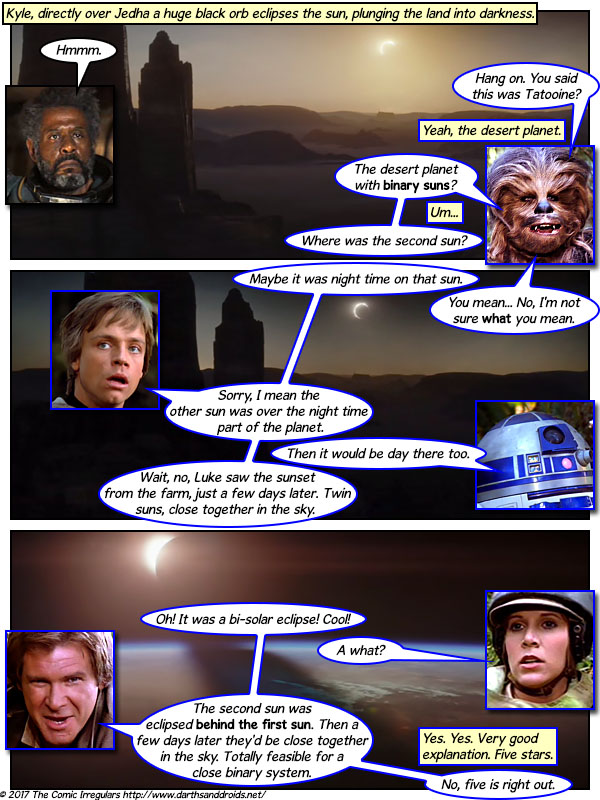Five stars. Imagine a system with five stars.
People on such a world might never see darkness. Their whole religion might be sun based. The idea that something could block out the sun in the sky when there's only one sun in the sky might be virtually inconceivable.
It's actually quite easy to understand what "night time on the other sun" would mean. And just because the two suns were near each other at one point, does not mean that they will always be near each other at all points.
But yes, one sun behind the other sun does fit nicely.
And all we need for an eclipse is a moon. In our world, we have this nice moon that is 1/400 the size and 400 times closer, so it fits. If the moon is smaller, it just has to be closer.
But that's no moon, ...
— Keybounce
Jim can always be relied upon for two things:
- Giving perfectly reasonable explanations for whatever the GM says is going on.
- Pointing out when something is simply ludicrous (he has much experience with such things after all).
Harrison Ford meanwhile, can always be relied upon for giving Jim some wonderful facial expressions.
— aurilee
Transcript
GM: Kyle, directly over Jedha a huge black orb eclipses the sun, plunging the land into darkness.
Kyle: Hmmm.
Ben: Hang on. You said this was Tatooine?
GM: Yeah, the desert planet.
Ben: The desert planet with binary suns?
GM: Um...
Ben: Where was the second sun?
Corey: Maybe it was night time on that sun.
Ben: You mean... No, I'm not sure what you mean.
Corey: Sorry, I mean the other sun was over the night time part of the planet.
Pete: Then it would be day there too.
Corey: Wait, no, Luke saw the sunset from the farm, just a few days later. Twin suns, close together in the sky.
Jim: Oh! It was a bi-solar eclipse! Cool!
Annie: What?
Jim: The second sun was eclipsed behind the first sun. Then a few days later they'd be close together in the sky. Totally feasible for a close binary system.
GM: Yes. Yes. Very good explanation. Five stars.
Jim: No, five is right out.

